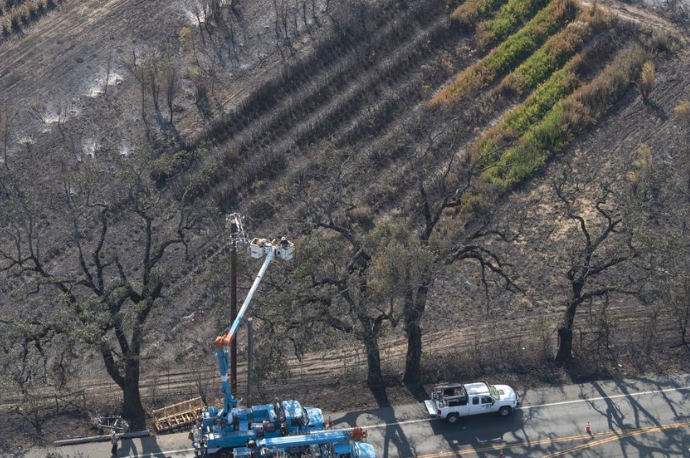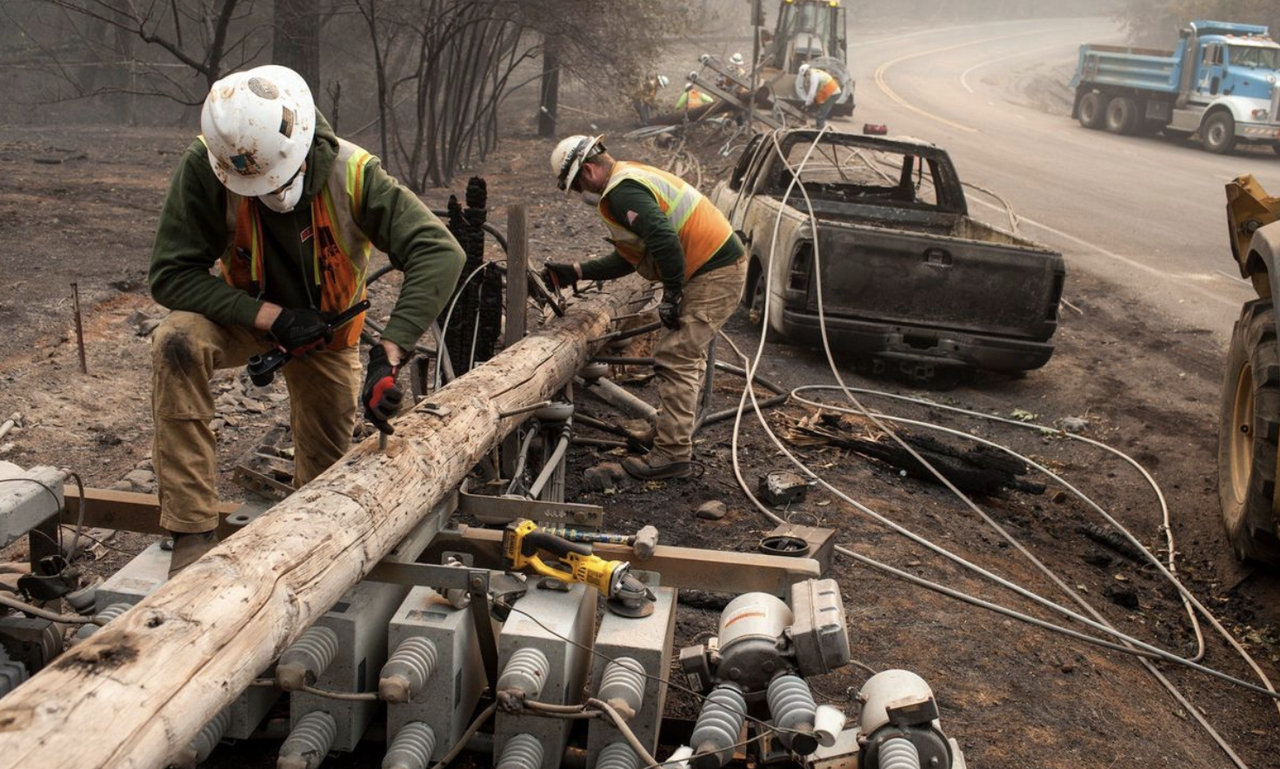We reported back in July that PG&E had known for years that hundreds of miles of high-voltage lines running in high-risk fire areas were at risk of failing and sparking a fire. And instead of acting swiftly to make the necessary upgrades, it appears the company routinely failed to identify the infrastructure most in need of maintenance.
As we plumb these depths of incompetence at PG&E, another example has emerged that truly shows off the company’s apathy as it related to potential fire hazards: it took PG&E eight months to prune one tree that was at risk of causing a fire, Bloomberg reports.
The tree, located in a “fire prone” area in Northern California, already had leaves singed off of it as wind gusts had blown it into a power line that was “inches away”. The tree was first flagged for maintenance back in November of 2018. Several months went by and one of the company’s tree-trimming contractors certified in February that the work had been completed. It hadn’t been.
In April, a “pre-inspector” again prescribed the tree for work, without noting that it was urgent. The tree was finally pruned – on June 12, about 8 months from it originally being flagged.
The details of this circus were detailed in a report issued this past week about the progress PG&E was making in Northern California. The company’s court appointed outside compliance monitor found that PG&E is overlooking high risk trees and isn’t training its contractors properly. It also found that the company is failing to keep up adequate records.
This may not help the company with the federal judge that is overseeing its probation for “multiple felony convictions in 2016 over shoddy record keeping for its natural-gas operations.”
The report could anger U.S. District Judge William Alsup, who has constantly reminded the company of its recklessness and is currently “straining” to punish the company for its poor fire prevention efforts. PG&E, as well as its CEO, are due back in front of the judge September 17.
A judge is expected to rule over the next few days on whether a group of bondholders can compete with the company in proposing a plan to restructure the company.
PG&E said in a statement: “PG&E’s service area includes more than 120 million trees with the potential to grow or fall into our overhead power lines. While we have made progress in many areas to further enhance wildfire safety including vegetation-management work, we acknowledge that we have more work to do.”
The company says that it has a plan to step up its tree trimming in high fire risk areas that span 25,000 miles of power lines as part of a new multi-billion-dollar wildfire safety plan. The court monitor is reviewing those efforts and is tasked with making sure PG&E doesn’t violate the terms of its probation.
The monitor’s role has expanded as PG&E’s equipment has been found to be at fault for wildfires that have torched Northern California and killed residents over the last few years. The company is under criminal investigation in Butte County, where the Camp Fire started, before killing 86 people.
The court monitor has said in his report to the court that he has found “significant, actionable findings.”
The monitor continued: “Inspections are not only revealing individual trees that are missed, including three active wildfire threats in high-risk areas, but they also reflect gaps in processes, for example, contractor training.”
The now-bankrupt PG&E has put together a contingency plan that would plunge millions of unsuspecting Californians into rolling blackouts reminiscent of the early 2000s (when the utility was last pushed into bankruptcy protection thanks to the market-manipulation hijinx of Enron and other electricity brokers), but as WSJ revealed in an explosive report published in July – a report that was probably the result of months of battles between the paper’s lawyers and California’s Freedom of Information Commission – PG&E has a long history of deterring maintenance on its lines and towers, a practice that directly contributed to causing the deadliest forest fire in California history.
via ZeroHedge News https://ift.tt/2Zedcbd Tyler Durden

